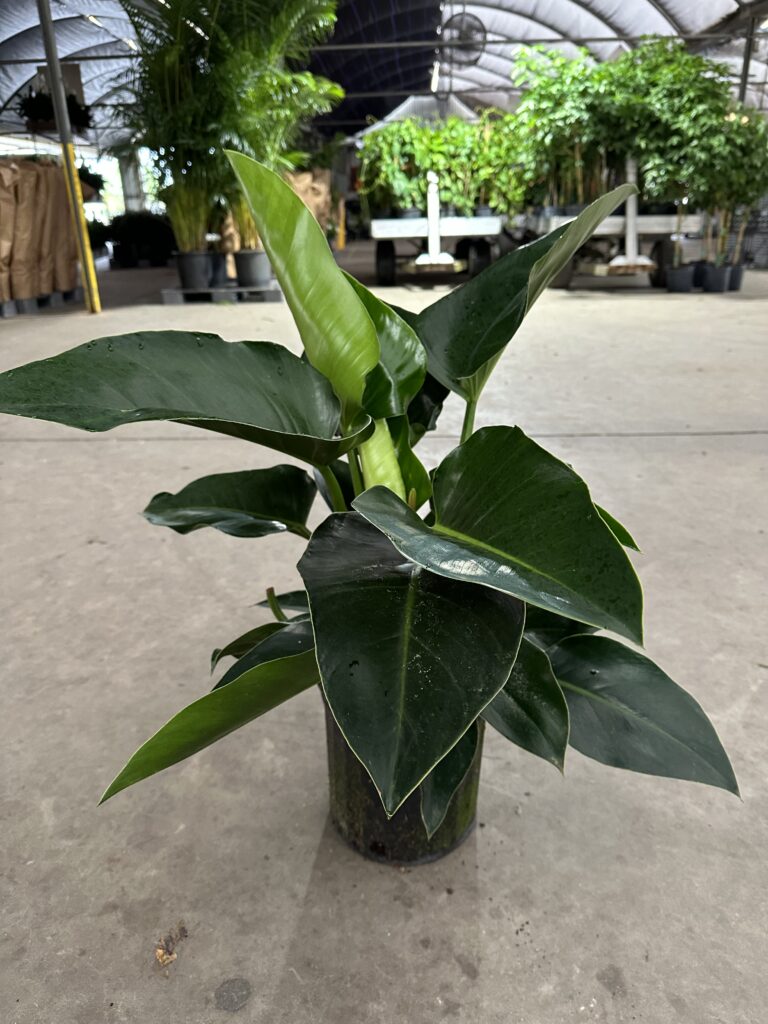
Philodendron plants are popular houseplants known for their lush foliage and easy care. They belong to the Araceae family and come in a wide variety of shapes and sizes. We offer these in 6″, 8″, and 10″ sizes.
Appearance
Growth Habit: Some species are climbing or vining, while others are bushier or have a more upright growth habit.
Leaves: Philodendron leaves can be large, heart-shaped, or deeply lobed, depending on the variety. They are often glossy and come in various shades of green.
Common Varieties
See our Moonlight Philodendron and Philodendron Monstera
- Philodendron Brasil: Known for its striking green and yellow variegated leaves.
- Philodendron Selloum: Features large, deeply lobed leaves and has a more tropical appearance.
Care Requirements
- Light: Prefers bright, indirect light but can tolerate low light. Avoid direct sunlight, which can scorch the leaves.
- Watering: Water when the top inch of soil feels dry. They like consistent moisture but should not sit in soggy soil.
- Humidity: Thrives in higher humidity levels. Misting the leaves or using a humidifier can be beneficial.
- Temperature: Enjoys warm temperatures, ideally between 65°F and 80°F. Protect from cold drafts.
Fertilization
Fertilize during the growing season (spring and summer) with a balanced, water-soluble fertilizer every few weeks.
Pests
Watch for common pests like spider mites, mealybugs, and aphids. Regularly inspect the leaves and treat any infestations promptly.
Propagation
Philodendrons can be easily propagated through stem cuttings or by division when repotting.
Toxicity
Note that Philodendrons are toxic to pets and humans if ingested, so it’s best to keep them out of reach of children and animals.
Philodendrons are versatile and can adapt well to various indoor environments, making them a favorite choice for plant enthusiasts!
If you have any questions, or are interested in purchasing, feel free to come by the nursery or give us a call at (352)735-8350. An overview of our inventory is also available to see online.
